Are you looking to ensure your tech systems run smoothly and efficiently? A well-crafted tech maintenance service agreement can be the key to protecting your investment and minimizing downtime. With the right agreement in place, you can rest easy knowing that professional support is just a call away whenever you need it. Read on to discover how to create an effective letter template tailored to your specific needs!
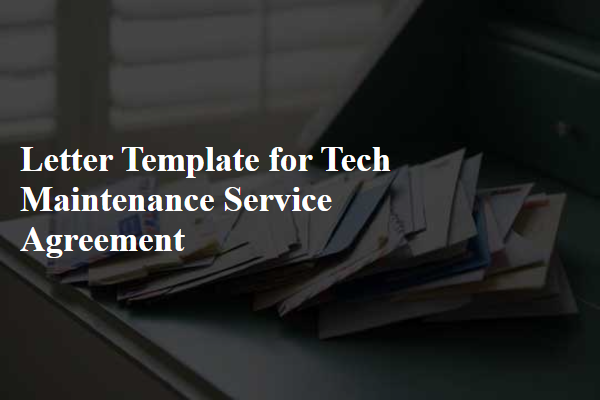
Scope of Services
The scope of services for a comprehensive tech maintenance service agreement includes regular system diagnostics (monthly evaluations of hardware and software performance), preventative maintenance (routine cleaning and updates of both physical and digital components), troubleshooting support (24/7 access to technical experts for immediate resolution of issues), software installation and updates (ensuring all applications are up-to-date with the latest security patches and features), and user training (conducting workshops every quarter to enhance staff competency with new technologies). Additional services can feature data backup solutions (scheduled backups every 24 hours to safeguard critical information), network security assessments (bi-annual evaluations of firewalls and intrusion detection systems), and emergency repair services (guaranteeing on-site technician availability within four hours for severe outages). All services provided are aimed at optimizing overall system performance and minimizing downtime for improved business continuity.
Service Level Agreement (SLA)
A comprehensive Service Level Agreement (SLA) outlines the expected performance and maintenance standards between a technology service provider and a client organization. This document typically includes key metrics such as response times, resolution times, and service availability percentages. For instance, a standard agreement may stipulate a 99.9% uptime for critical systems, ensuring minimal disruption to operations. Specific services may encompass hardware maintenance for servers located in data centers, software updates for enterprise applications, and on-site support for critical incidents. Additionally, the SLA should detail penalties for service level breaches, which might include service credits (monetary or percentage) based on the extent of service outages. Key stakeholders such as IT managers (responsible for overseeing technology use) and service delivery managers (ensuring compliance with the agreement) are often involved in discussions to tailor the SLA to suit both parties' needs. Regular reviews and performance assessments are also commonly included for ongoing improvements.
Payment Terms
Payment terms in a tech maintenance service agreement often specify the agreed-upon monetary compensation for services rendered, typically outlined in sections that detail due dates, payment methods, and penalties for late payments. For example, invoices may be issued monthly or quarterly, based on the completion of service levels as defined in the contract. Accepted payment methods can include bank transfers, credit cards, or checks. Specific penalties might be stated, such as a 5% late fee for payments not received within 30 days of the invoice date. Regular audits of service usage (number of hours or incidents) can also be established to minimize discrepancies and ensure financial transparency throughout the contract duration.
Confidentiality and Data Protection
Confidentiality and Data Protection in tech maintenance service agreements emphasize the importance of safeguarding sensitive information. This includes industry standards such as the General Data Protection Regulation (GDPR), which applies to organizations operating within the European Union. Service providers must implement stringent measures to protect client data from breaches, ensuring that proprietary software and user data remain confidential. Data storage solutions, such as encrypted servers, are essential to prevent unauthorized access. Additionally, regular audits and compliance checks are necessary to align with regulatory frameworks and enhance trust between clients and service providers. Effective data handling procedures will also include clear protocols for data disposal and incident response plans in the event of a data breach.
Termination and Renewal Conditions
Termination and renewal conditions in a tech maintenance service agreement refer to the specific guidelines that govern the end of the contract and the possibility of continuing the service. Clients must provide explicit notice of termination, typically requiring a minimum of 30 days written notice before the end of the service period. Renewal options may include automatic renewal clauses, where the agreement extends unless either party opts out, or the potential for renegotiation of terms. It is essential to clearly define the duration of the original contract, specify any fee adjustments for subsequent terms, and outline the circumstances under which either party may terminate the agreement early, such as failure to meet service obligations or financial instability. These stipulations ensure clarity and continuity within the technology maintenance relationship.

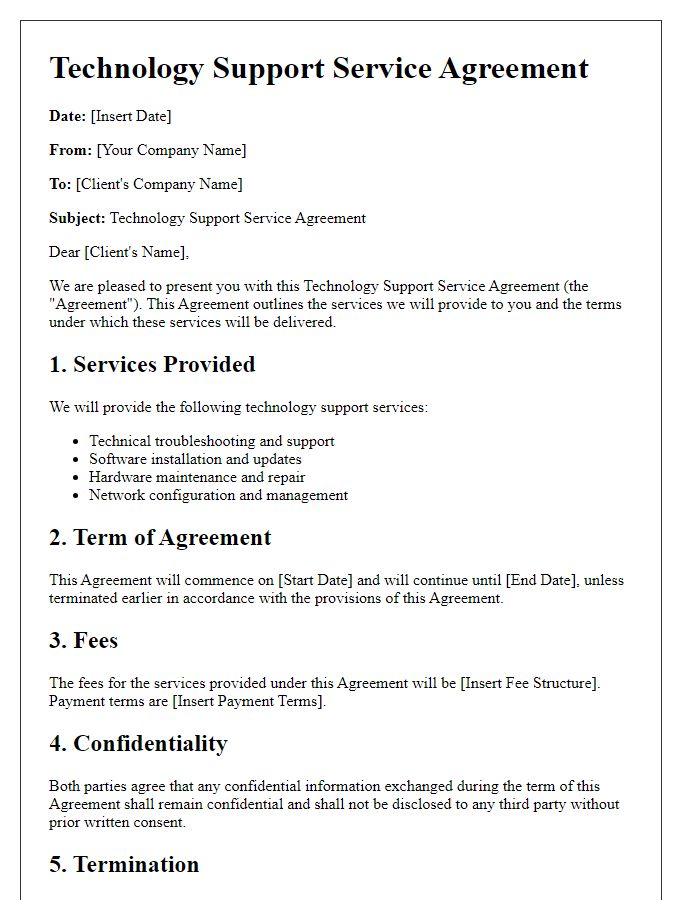
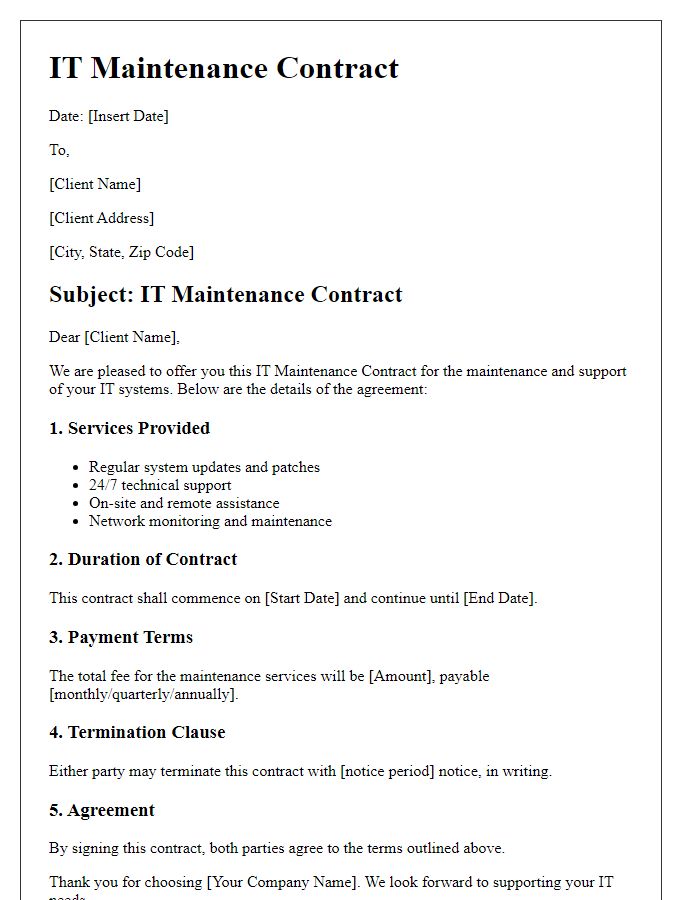
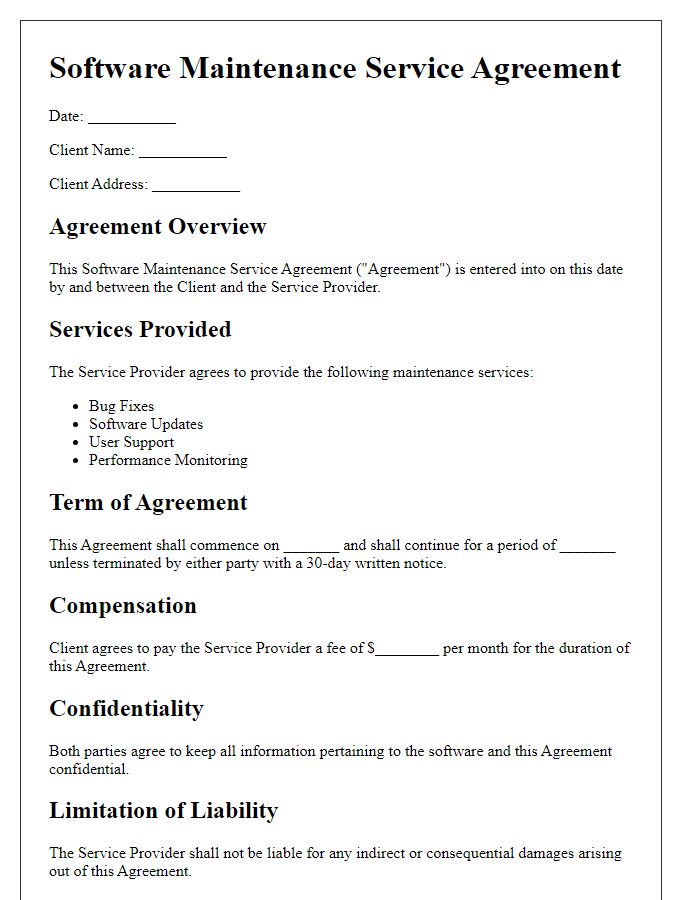
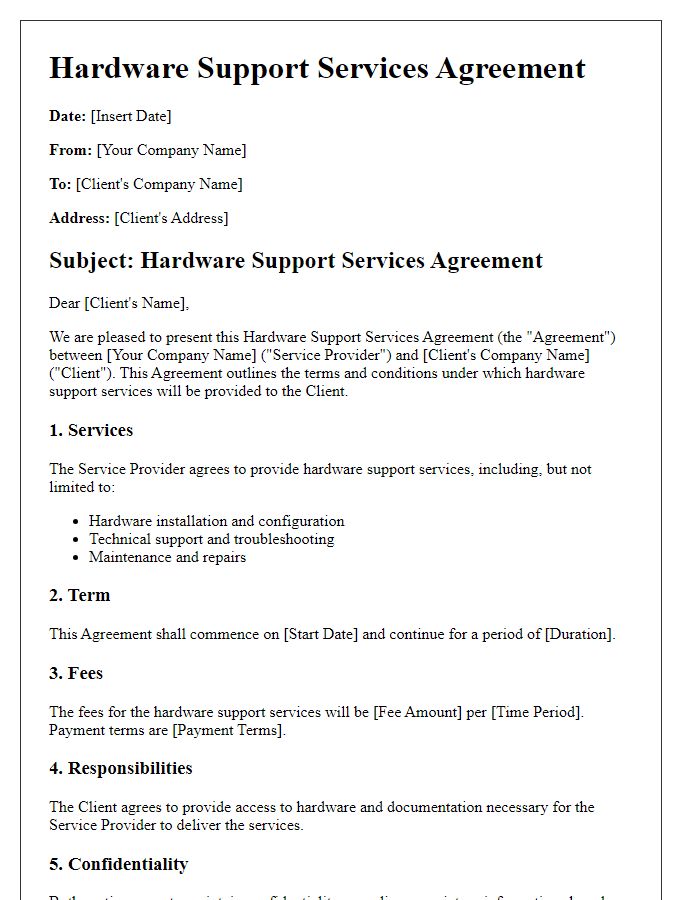
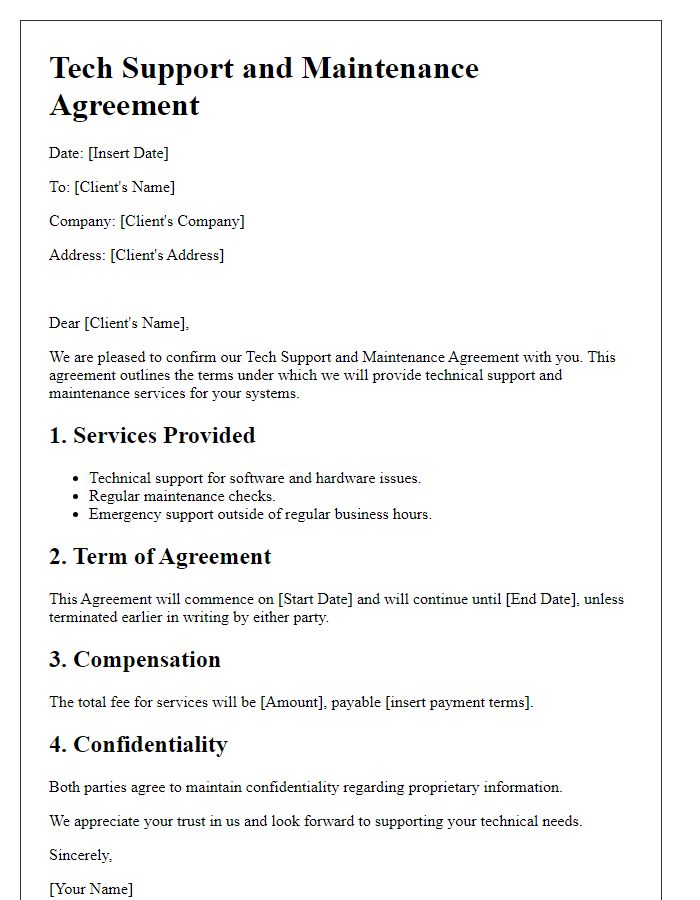
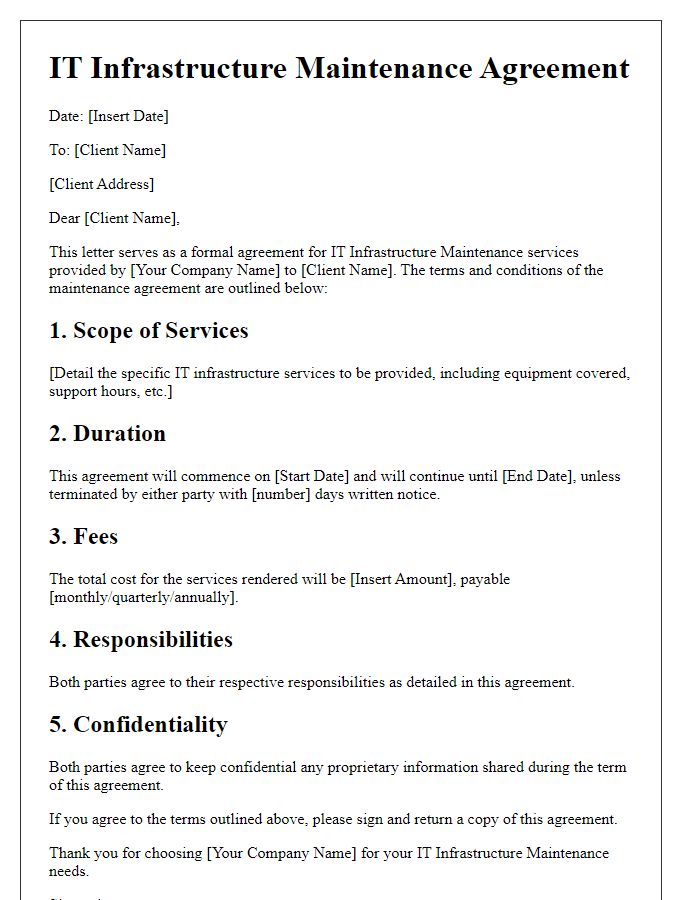
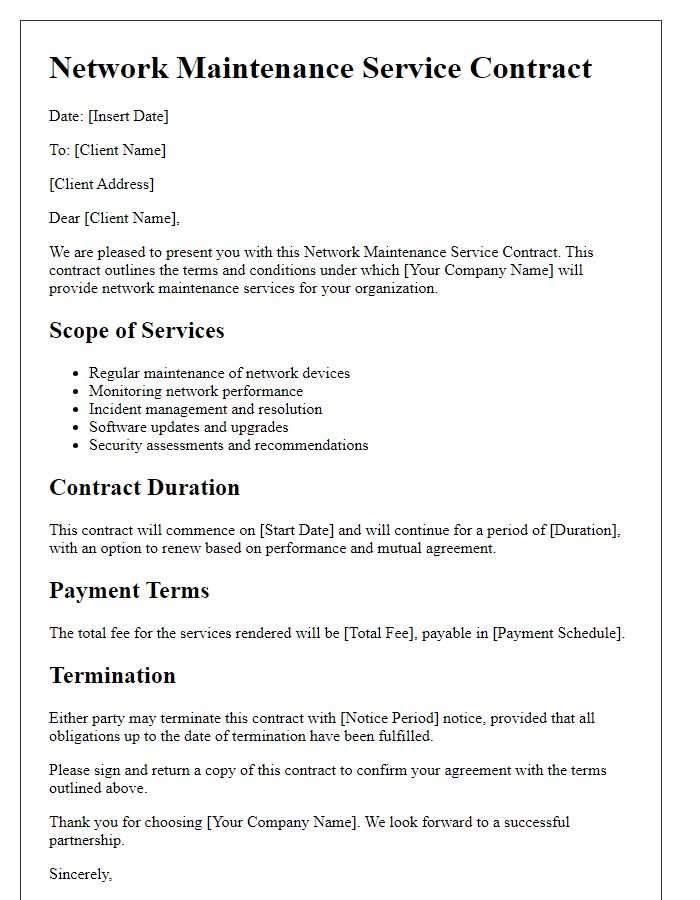
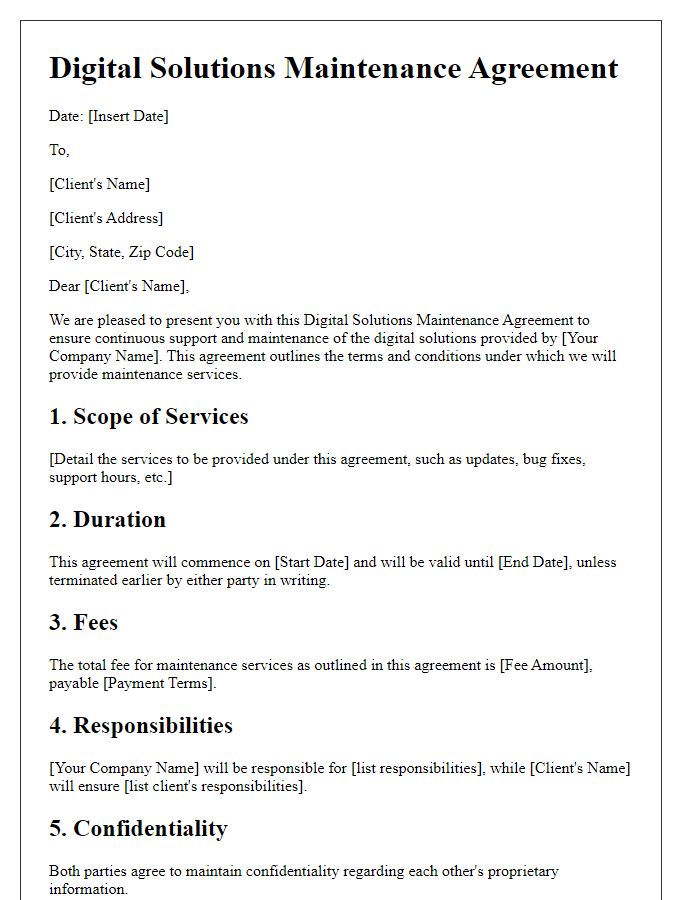
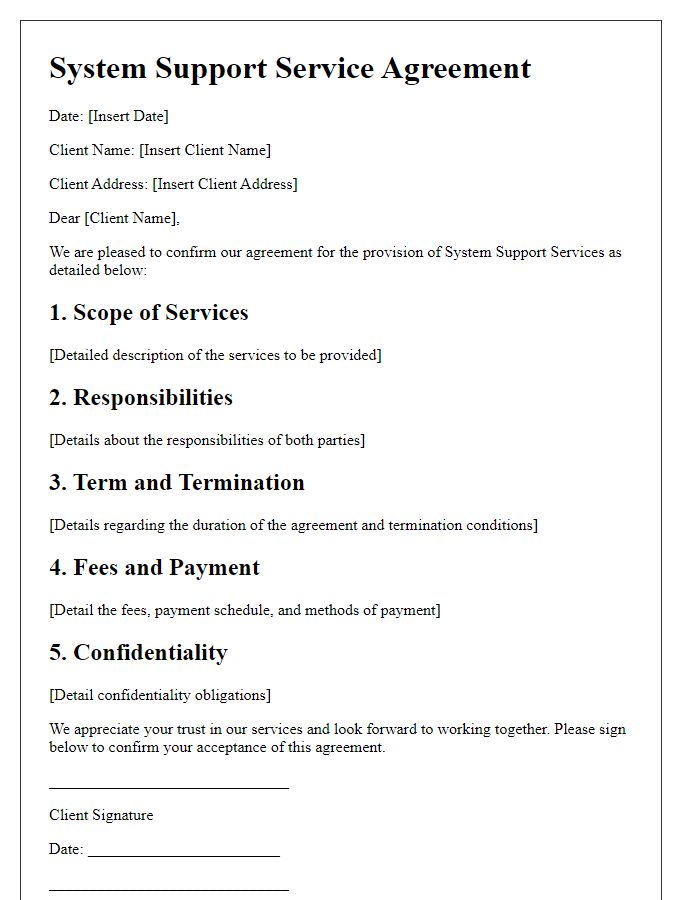
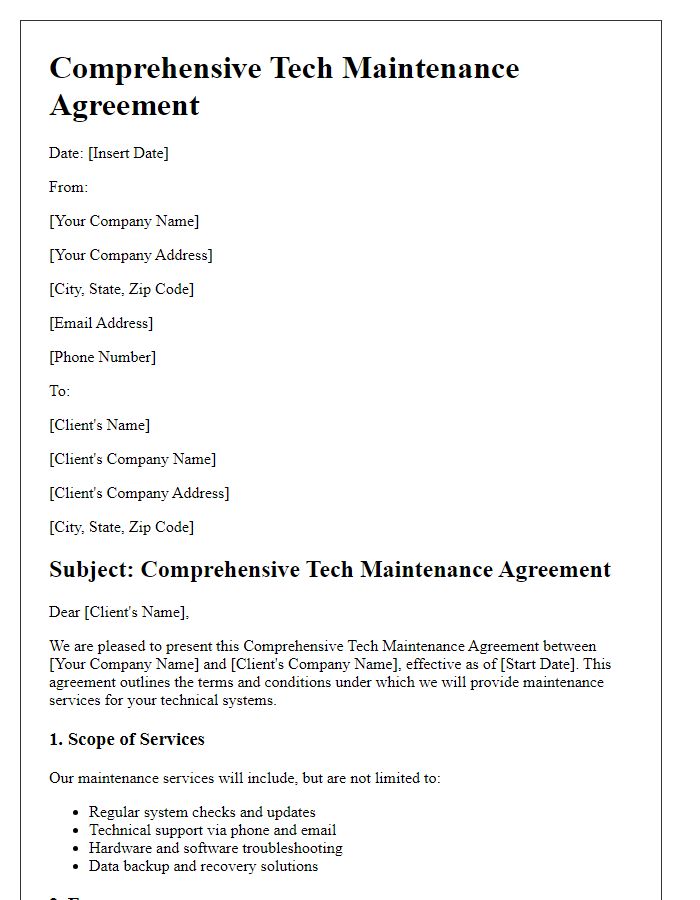


Comments